Discovering Pays d’Oc Wines
8th October 2024
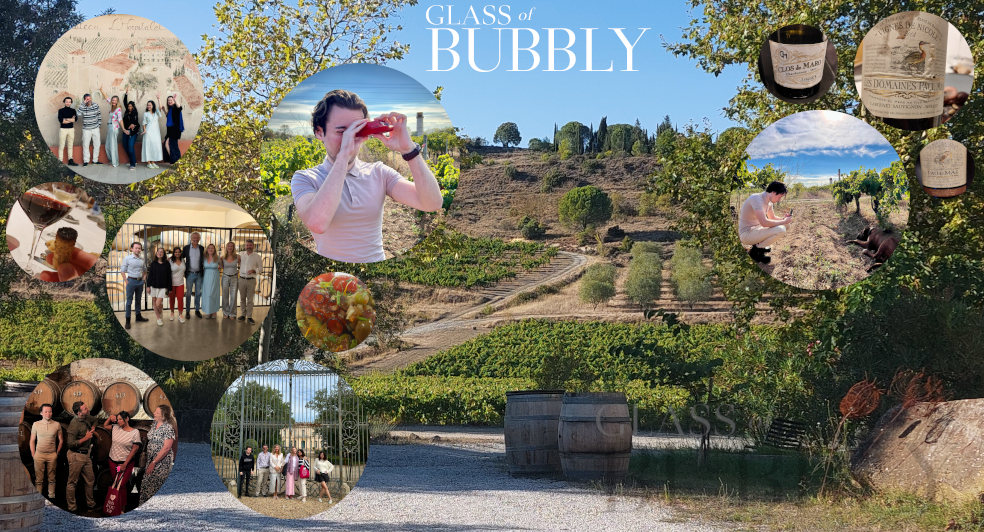
If you need to find a reason to travel down to the South of France, other than it’s fantastic weather, yacht filled blue waters, fantastic architecture and Michelin star food, then let me share with you, one of the biggest reasons of all.
If I had to give a quick summary of Pays d’Oc in the south of France, based on my experience, it would be this: “A region filled with a great quality of wines, larger than life personalities, a passion for the environment and sustainability, a love for local and community produced products, and one of the best castles I’ve ever seen.”
Pays d’Oc IGP is not a wine region, but a designation of origin, to put it more precisely: a protected geographical indication, with IGP and AOP being the only European official signs of quality for wine.
AOP – Appellation d’Origine Contrôlée, which, in France, designates a product that every stage of the production is done within the region.
IGP – Indication Géographique Protégée, means that the Grapes within the bottle come from a defined area & that the winemaking is done in the area.
Pays d’Oc has 120,000 hectares planted, which is 15% of the French vineyard, IGP Pays d’Oc authorizes 58 varietals of grapes, with the three most popular grapes for red, white & rosé being the following:
Red –
- Merlot – 972,681 hl
- Cabernet-Sauvignon – 654,089 hl
- Syrah – 288,596 hl
White –
- Chardonnay – 842,945 hl
- Sauvignon Blanc – 436,459 hl
- Viognier – 157,939 hl
Rosé –
- Grenache Noir – 474,265 hl
- Cinsault – 360,744 hl
- Syrah – 332,721 hl
The number of green certifications in Pays d’Oc is increasing, in 2020 there were 4,353, in 2021 there were 8,916 and in 2022 there were 9,948.
You can buy Pays d’Oc wines in glass bottles with corks, screwcaps, wine pouches, and sealed glasses.
41% of Pays d’Oc IGP wines are exported, with 21% to Germany, 15% to the Netherlands, 13% to Belgium, 7% to the UK, 6% to Switzerland, 6% to Canada, 5% to the US, 4% to Sweden, 3% to China, 3% to Japan, and 17% to other countries. 17 million bottles hit the shelves in the UK in 2023
Our guide and trip organizer was the lovely and an incredibly kind Sarah Hargreaves, she went out of her way to make the experience as comfortable and as accommodating as possible, showcasing a part of everything Pays d’Oc has to offer the world, she’s extremely knowable on the region, which helped massively to provide us with a further wealth of knowledge, I don’t think any of us could have asked for a better guide during this trip.
Pays d’Oc IGP Headquarters
After arriving at the airport in Montpellier, we took a short drive to the Pays d’Oc IGP headquarters, we were warmly welcomed and introduced to the region of Pays d’Oc IGP, along with a tour of their base of operations, which showcased their incredible tasting room, which is used to verify the quality and grant Pays d’Oc IGP status to the wines of the regions, only if they meet the criteria.
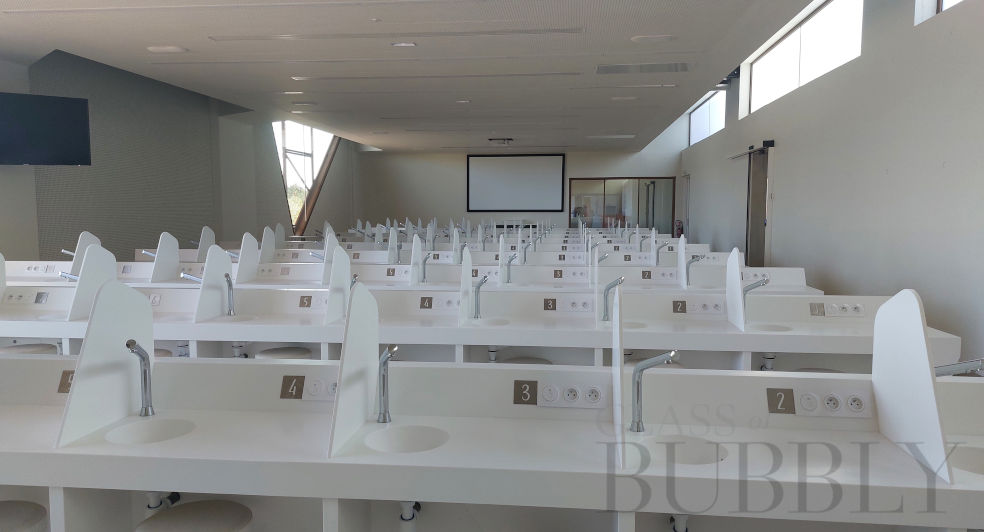
Cave de Richemer
Our first visit and tasting of the wines of Pays d’Oc came with Cave de Richemer, a cooperative of the region, giving us a perspective of Pays d’Oc, a massive operation, with an impressive visual display to welcome newcomers to the region, then lifting to reveal their huge operation.
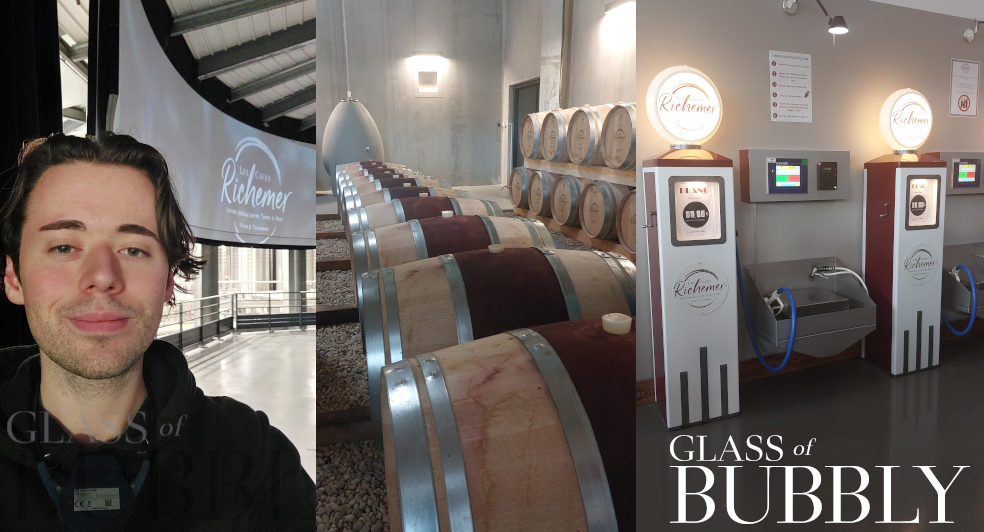
If you ever need to fill up on wine, then you can head to Richemer’s Petrol Station filled with delicious wine, so bring your Jerry Can, large portable container, or a really big glass and pour to your heart’s content.
Richemer Chardonnay – “Crisp, subtle green, fruity characters, smooth, silky, buttery.”
Richemer Rosé Cinsault – “Lovely delicate aroma, pink floral and blossom, subtle hints of orange zest, hidden behind icing sugar covered strawberries on the aroma.”
Richememer Rose Marconer – “A sweet pink floral blossom taste, with strawberries and ripe non tannin red berries.”
Domaines Paul Mas

Jean-Claude Mas, from Domaines Paul Mas greeted us with an incredible tasting, over 20 different wines, showcasing different grapes and styles, a true eye opener to the region. They produce 6 million cases a year, buy in 7 million cases worth from other producers, and work with and store at wineries a further 2 million cases.
Paul Mas Chardonnay – “Lovely light oak, crisp and refreshing.”
Paul Mas Chardonnay-Viognier – “Smooth, touched aged oak, nice wooden feel to the palate with delicate fruits.”
Paul Mass Clos de Maro Chardonnay Limoux – “Very smooth, creamy sensation and flavours of cooking vanilla, with ripe pineapples and very delicate tropical spices. Caramelized pineapples. Very nice wine, beautifully crafted, something to take time over, rather than just drink (Most memorable wine from the trip).”
Paul Mas Pet-Net – “Soft and delicate zesty lemons and yeasty notes along with a touch of yellow floral. A silky smooth but powerful expression of yellow rose petals, blossom and floral notes, delicate yeasty notes, and cooking lemons.”
Paul Mas – Vignes De Nicole 2003: Cabernet Sauvignon-Merlot – “Hints of wood and ground spices appear, wood chips, dark and rich on the aroma. Dry, rich, delicate dark chocolate, aged dark red and black berries aging together, touch of spice left in the palate.”
Ricardelle de Lautrec
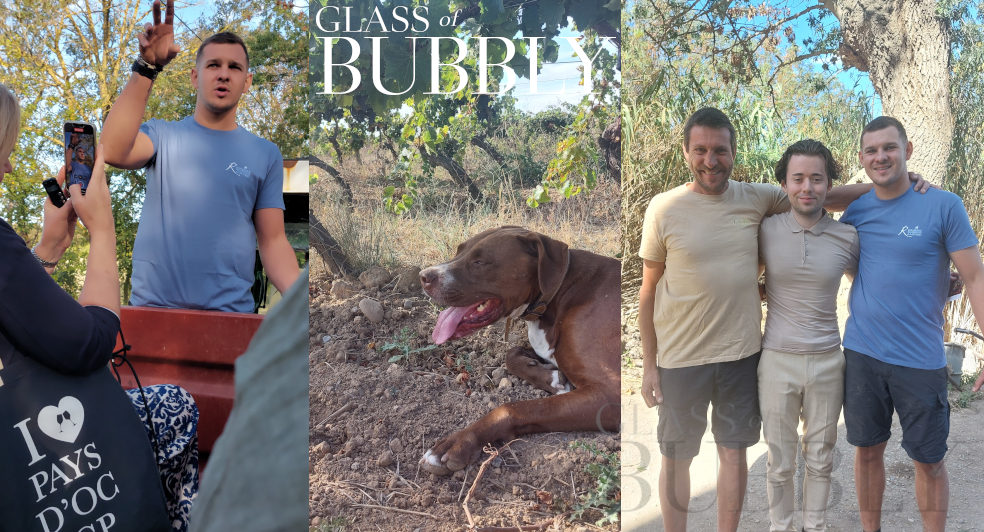
Walking into Ricardelle de Lautrec was like walking into a friend’s home, very welcoming and excited to share with you what they’ve been up to, you immediately feel at ease and find their excitement contagious, looking forward to discovering everything they’re about to show you.
In 1999, Ricardelle de Lautrec began their transition to organic farming. It wasn’t an easy task. They say they looked like fools when they started and today they are considered pioneers in their region. To Ricardelle de Lautrec, organic farming means knowing how to observe, listen and exchange with their colleagues. And since January 2021, they have taken a new step towards their conversion to Biodynamics.
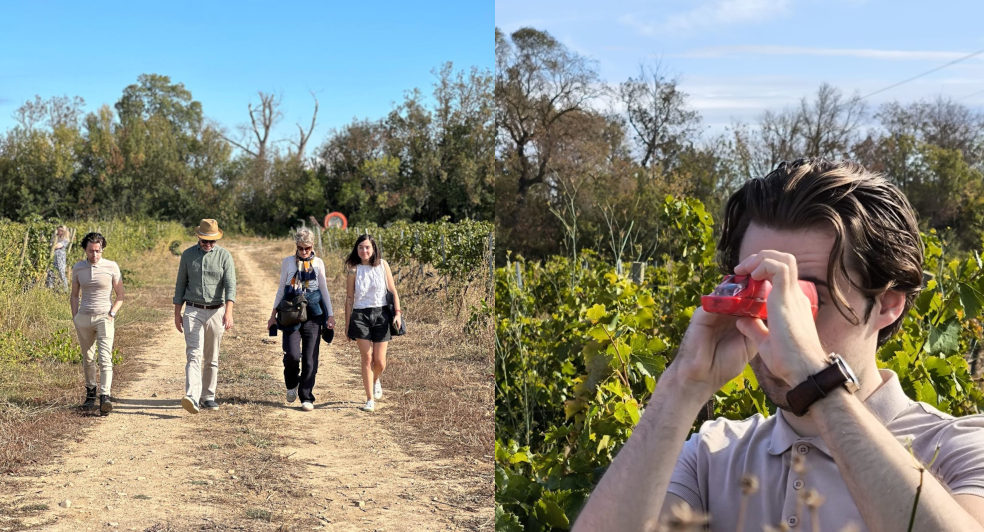
Image Left – Taken by Ruchira Neotia DipWSET / Image Right – Taken by Fran Bridgewater
Upon returning from the vineyards, we got to taste some of their wines still in the tank, close to being ready to bottle. Exploring their wine shop showcased the range of creative and artistic labels that they use. Then the tasting of their current releases took place outside in the sun, sampling their white’s, rosé’s and red’s. An overall impressive quality, showing once again that organic practices in winemaking have no effect on the quality.
Famille Fabre + Escape Room
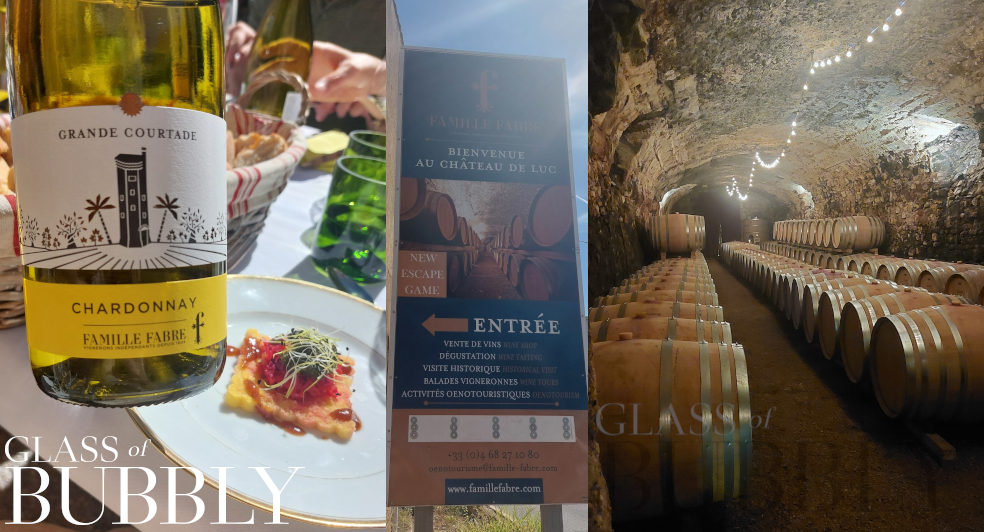
Like walking into what could easily be a scene out of a Daniel Craig’s James Bond film, an incredible combination of mystery and prime southern French architecture, we had a table laid out for us in the middle, already sun kissed and waiting, greeted by Jeanne Fabre and her partner, we enjoyed a lovely lunch and discovered their wines in a very relaxed manor, pairing them with a selection of lovely home cook dishes, after which, it was time for the ultimate challenge, to try our hand at escaping their Escape Room…

Famille Fabre is the first winery I’ve visited with its own Escape Room, which opened in 2021, without giving too much away, the experience will have you delving into your wine making skills as you try to discover hard evidence and stop the sale of fraudulent wines before your winery is driven under by the undercutting of prices which no one can match. If you visit Famille Fabre for a wine tasting, I think it would be a missed opportunity not to take an hour out of your day to try and escape their Escape Room for yourself.
What Was The Inspiration Behind Creating An Escape Game At Famille Fabre?
“I guess my first inspiration was to find a way to share the long history of my family, passionate about the same job of winemaking since 1605… I wanted to use all these little anecdotes and objects that give so much interest to the big history, because it makes it alive!
Why an escape room? Maybe because I hate when people get bored, or have the feeling they are trapped into some lecture given by somebody who knows everything; I wanted people to experience by themselves, to have fun, to have to collaborate and plan strategies…
It is the same core value you can find in any activity at Château de Luc;
We don’t teach you if a wine is better or worse, we try to give you confidence in your own capacity to taste and like or not a wine.
The message: you are the main character of the whole adventure, and wine is not an elite product; it is all about pleasure and sharing a fabulous experience.
Escape game is a great support for that, and I thank my friend Mathieu from Instinct Escape who helped a lot for the secret mechanisms and enigmas… We wanted the game to be hyper professional, so people have really to struggle to find their way to the end… Suspense is everything!” – Jeanne Fabre
Domaine Calmel & Joseph
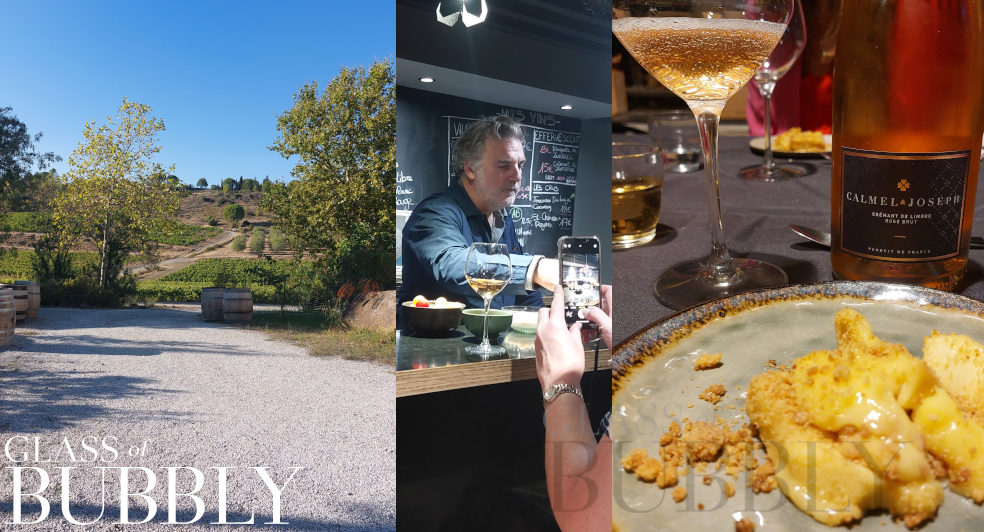
Driving into the heart of a 160-hectare site, we discovered Domaine Calmel & Joseph, with an overall combined 200 hectares of vines under the Domaine. Their estate is surrounded by picturesque vines, it’s a location where you can stay, and spend your day walking among the vines, relaxing in the indoor swimming pool, enjoying a tasting in the afternoon and having a wonderful dinner in the evening.
Maison Calmel & Joseph was founded in 1995, but the estate first appears in a property deed in the name of Noble Jehan de Calmès – Lord of Saint Jullia on July 26, 1577. The farmhouse will be spoken of by several names throughout its history such as Borde Neuve or La Madone.

Their onsite rooms are spacious and homely, each is unique, my room contained a large bookcase with a selection of books, films, and board games to enjoy during your stay, although I wouldn’t recommend spending all your time in the room, with a heated indoor swimming pool, and incredible views of the surrounding vines which you can freely walk through, it makes for a relaxing nights stay.
Domaine Gayda

We couldn’t have arrived at a better time. We were met by the witty and charismatic owner of Domaine Gayda, Tim Ford who took us on a tour showcasing a part of everything they do. Starting from the vineyards and olive trees, which you could have named after yourself and your significant other if you’d decided to be wed on their estate, to the winery, where we tasted grapes freshly picked and ready to be crushed, to seeing a recently picked portion of grapes being separated from their stems and turned into grape juice before our very eyes, to their oak barrel and ‘dinosaur egg’ storage warehouse, after which we were taken up to their tasting rooms with gorgeous views of the surrounding hills covered with their vineyards.
Their Chemin de Moscou labels are by far their most popular and biggest sellers.
This is where we also enjoyed lunch, after the tasting was completed, we were able to choose the wines we liked best and enjoy a glass or two over a delicious lunch. Great food, splendid wines, a gorgeous backdrop and lovely people, what more can you ask for.
Domaine Gayda was founded in 1749
Le Comptoir de la Cité
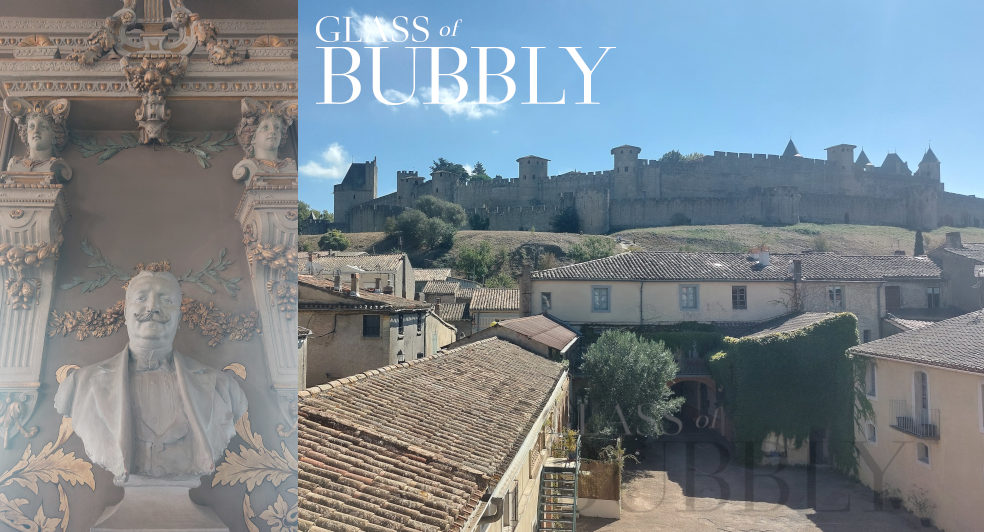
Le Comptoir de la Cité is primed for consumers to visit, sit and enjoy a good glass of wine, with a 180-degree view of the incredible medieval city and a tasting room lined with art and culture, they host a variety of events featuring wines from Vignobles Foncalieu and a tapas menu based on local produce.
It is a mesmerizing sight to see and made into perfection with a glass of wine in hand.
Gérard Bertrand
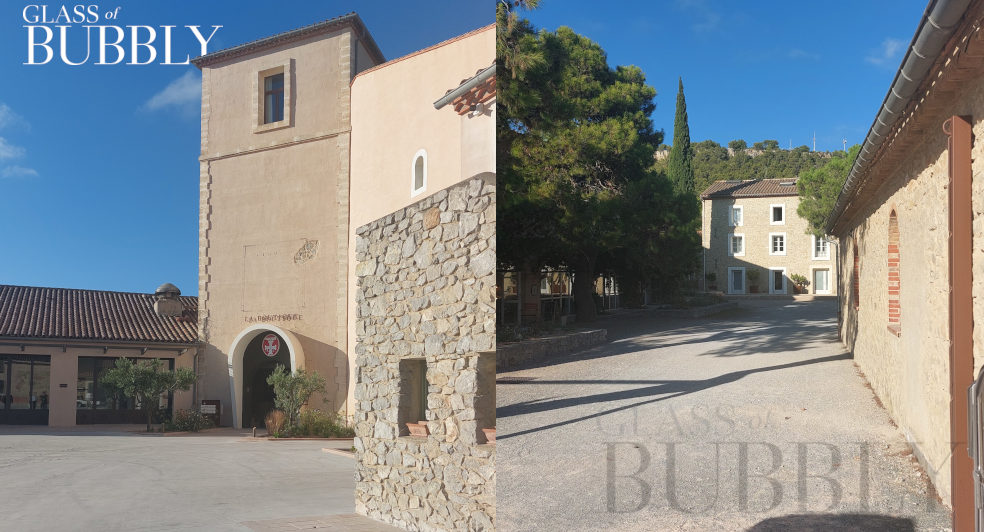
One of the biggest wineries of the region and highly respected throughout, Gérard Bertrand offers something for everyone, from the whites, rosés red and chilled red, to the sparklings to their aged vintages, an incredible visual display of luxury and highly adept staff that make you feel like royalty when staying at their onsite Hospitalet and enjoying an unforgettable dinner at L’Hospitalet Beach, a restaurant assembled for the summer directly on the beach.
Travelling back to 1975 in the vineyards of Château de Villemajouin, the heart of the Corbièresthat, Gérard Bertrand harvested his first grapes and discovered his passion for wine. He worked alongside his father, Georges Bertrand for twelve years, developing lifelong skills.
He developed and values performance and excellence which he’d learned on the rugby pitch, Gérard Bertrand is adamant in his quest to reveal the best terroirs of his region and continue sharing them across the world.
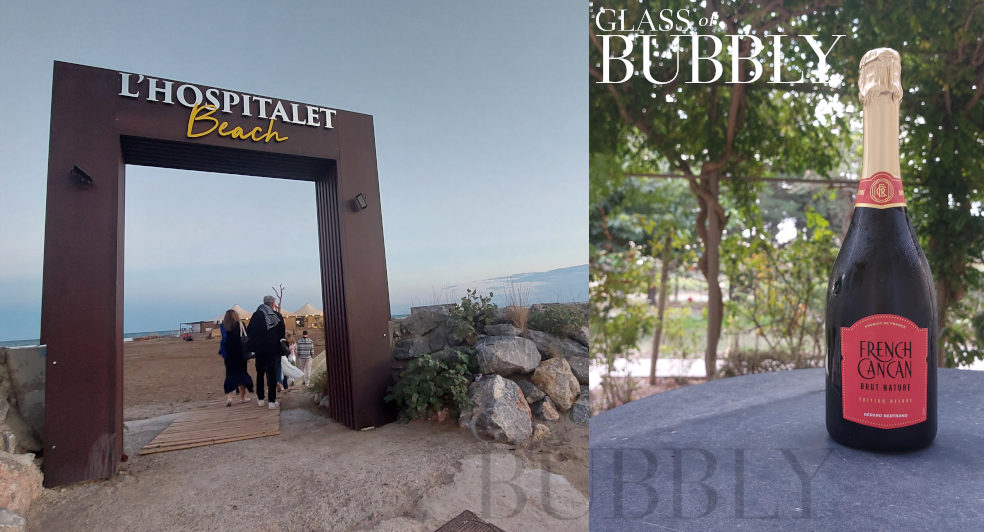
He would then take up the family torch at Domaine de Villemajou after the accidental death of his father in 1987, five years later, he created his own wine company Gérard Bertrand to create his range of wines from the finest regions in the South of France, he would expand by buying back the Domaine de Cigalus and the Château Laville Bertrou and acquiring Château L’Hospitalet Wine Resort Beach & Spa in 2002.
Chateau de l’Engarran
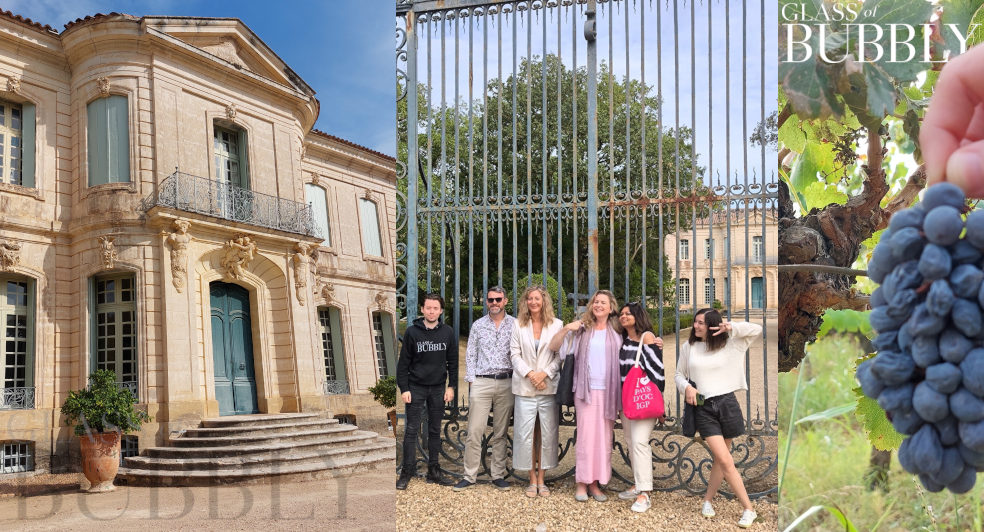
Henri d’Engarran established the foundations of the estate in 1632 around a 17th century farmhouse and a 9 ha vineyard. His last wishes were that his name would remain attached to that of the Château.
Another important part of the story comes from Laurent Quetton Saint Georges, after making his fortune colonizing Upper Canada in the name of King George V, returned to France and acquired the estate, increasing the vineyard to 27 ha and started exporting the wines to Canada.
Today Château d’Engarran covers around 60 hectares and is open to visitors.
Lunch at Plage Palace by the sea in Montpellier
The final lunch of the trip, with those who I’d spent the last few days discovering the region of Pays d’Oc with, was set with incredible views, a clear blue sky and shining sun, at Plage Palace in Montpellier, a very fitting end to such an incredible trip, with our incredible host, Sarah Hargreaves, who had organised a very memorable, informative, educational and fun filled experience, discovering a little piece of everything the region, wineries and people have to show the world.
Some of the pictures within the feature image were taken and belong to Fran Bridgewater, Ruchira Neotia DipWSET & the Pays d’Oc team. Glass of Bubbly was granted permission to use them.
![]()
Oliver Walkey
Champagne and Sparkling Wine Writer, Focused on Bringing the Exciting and Fascinating World of Bubbly to You.
